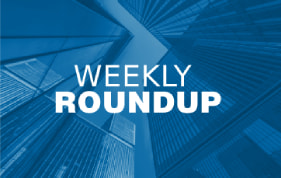On March 4, 2025, the Centers for Medicare & Medicaid Services (CMS) rescinded the 2023 and 2024 guidance on Health-Related Social Needs (HRSN) Section 1115 demonstrations. This policy shift signals a significant pivot in federal Medicaid priorities under the current administration. While states with approved HRSN demonstrations may continue operating under existing terms, the path forward for pending proposals and future renewals is less certain.
This article explores key considerations Health Management Associates (HMA), experts identified for states that need to realign HRSN activities with other activities to align with the Trump Administration’s federal policy objectives and priorities for Section 1115 Medicaid and CHIP demonstrations.
Background on HRSN Initiatives in Section 1115 Demonstrations
In November 2023 and December 2024, CMS published guidance on a new Section 1115 demonstration that gave state Medicaid and CHIP agencies the opportunity to address the broad environmental conditions, or social determinants of health (SDOH), that affect people’s health. This initiative permitted states to address the individual-level adverse social conditions of enrollees that contribute to negative health outcomes. To assist states in their efforts, CMS approved Section 1115 demonstrations that piloted the provision of housing, food, non-medical transportation, and other environmental supports that meet enrollees’ HRSNs.
What does CMS’s rescission of the HRSN demonstration policy initiative mean for states planning their next steps and priorities for Medicaid and CHIP?
First, CMS’s March 4 rescission has no impact on states with a current, active Section 1115 demonstration that includes HRSN. States with HRSN demonstrations can maintain their approved programs until the scheduled expiration date; however, requests to amend any aspect of the program before it expires could subject the state to renegotiation of HRSN components that align with the new federal direction.
Second, states with pending HRSN Section 1115 demonstration proposals should proactively consider new coverage approaches to authorize services that address an individual’s SDOH. Pending proposals developed using the now rescinded guidance may require substantial changes to gain approval. States should also prepare for additional public comment periods if revisions significantly alter the original design.
Looking ahead, CMS is not expected to renew demonstration components that no longer align with current federal objectives. This projection pertains to any demonstration component, not just the rescinded HRSN guidance. States should start planning now for how they will sustain successful HRSN-related outcomes through alternative coverage pathways.
Strategic HRSN Pivot Considerations
While the HRSN guidance has been rescinded, CMS has not withdrawn the 2021 State Health Official Letter RE: Opportunities in Medicaid and CHIP to Address Social Determinants of Health (SDOH) (SHO# 21-001), published during the first Trump Administration. This leaves room for states to pivot HRSN initiatives into other federal authorities, such as:
- State Plan Amendments and Waivers. These approaches include state plan options, 1915 waiver options, CHIP Health Services Initiatives, as well as certain special program authorities like Program of All-Inclusive Care for the Elderly or Money Follows the Person.
- Behavioral Health Integration: States may expand SDOH supports for individuals with substance use disorder, serious mental illness, or serious emotional disturbance, leveraging still-active guidance from first Trump Administration, Letter to State Medicaid Directors Strategies to Address the Opioid Epidemic (SMD # 17-003) and Opportunities to Design Innovative Service Delivery Systems for Adults with a Serious Mental Illness or Children with a Serious Emotional Disturbance (SMD # 18-011). By expanding activities focused on improving addiction or behavioral health treatment for Medicaid or CHIP beneficiaries, states could explore novel approaches to offering SDOH services.
- Childhood Chronic Disease Prevention: States could consider aligning SDOH activities with the Make America Healthy Again initiative of the current administration by focusing on environmental factors that adversely affect an enrollee’s health, such as poor nutrition, chronic stress, overexposure to synthetic chemicals, and mental health challenges.
- Justice-Involved Populations: States could explore reentry services and SDOH supports for individuals transitioning from carceral settings to the community, including compliance with new Medicaid requirements for incarcerated youth under the Consolidated Appropriations Act of 2023.
- School-Based Health Services. States could explore SDOH activities as part of new approaches to address gaps in the provision of school-based health services to Medicaid and CHIP eligible children. CMS and the US Department of Education launched a joint effort to expand school-based health services by establishing the Medicaid School-Based Services (SBS) Technical Assistance Center to help states increase healthcare access to children enrolled in Medicaid and CHIP. States could explore SDOH initiatives that expand the capacity of school-based entities that provide assistance under Medicaid or CHIP.
Looking Ahead
As states recalibrate their Medicaid and CHIP strategies, understanding how they can align with evolving federal priorities is critical for all stakeholders. Notably, Medicaid stakeholders, including managed care organizations, hospitals and health systems, and providers, also have several opportunities, including:
- Inform State Strategy: Plans and providers can share data and outcomes from HRSN interventions to help states assess the value of these services and whether they should continue under alternative authorities.
- Shape New Demonstration Designs: As states pivot to align with new federal priorities, plans and providers can offer practical insights into how SDOH interventions could be integrated into behavioral health, reentry, school-based services, and chronic disease prevention efforts.
- Strengthen Community Partnerships: Continued collaboration with community-based organizations will be essential to maintain service delivery and demonstrate impact in new policy contexts.
Connect With Us
HMA’s team—including former CMS Section 1115 leaders and other colleagues steeped in Medicaid and CHIP policies and operations—offers unique expertise in designing demonstrations that reflect current federal policy priorities and maximize state outcomes in alignment with program objectives that CMS will support.
For questions about these developments and your organization’s plan to adapt to new federal Medicaid policy priorities, contact our featured experts below. Connect with our experts and other leaders experienced in new pathways for covering effective services at the HMA National Conference, October 14-16, 2025, in New Orleans, LA.




